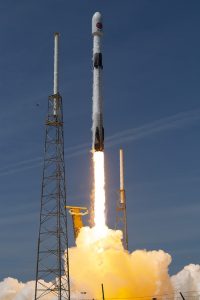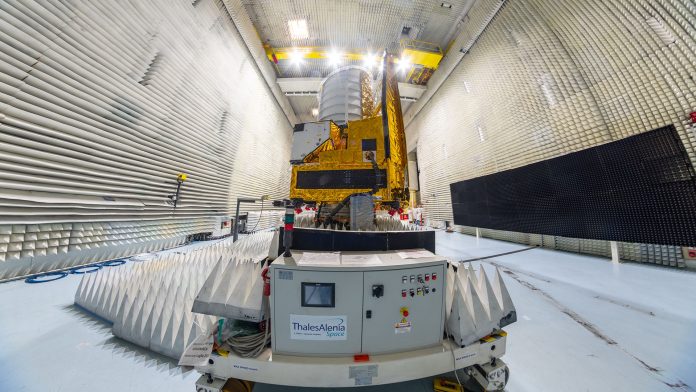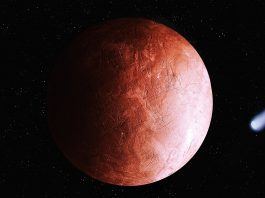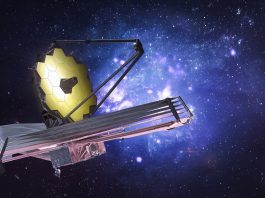Euclid Project Manager Giuseppe Racca spoke to The Innovation Platform to explain more about the mission designed to answer the key questions about the dark Universe.
On 1 July 2023, the European Space Agency’s Euclid spacecraft successfully set off on a SpaceX Falcon 9 rocket from Cape Canaveral Space Force Station in Florida, US.
Designed to explore the evolution of the dark Universe, Euclid is a fully European mission built and operated by the European Space Agency (ESA). The cosmology survey mission is optimised to determine the nature of dark energy and dark matter on universal scales and will answer key questions relating to the structure and history of the cosmic web; the nature of dark matter and dark energy; the evolution of the Universe; and our understanding of gravity.
The Euclid spacecraft is approximately 4.7m tall and 3.7m in diameter. Its operational orbit will be a halo around a point known as the Sun-Earth Lagrange point 2 (L2), at an average distance of 1.5 million kilometres beyond Earth’s orbit. The estimated mission timespan is six years, with the possibility of extension if needed.
Ahead of the launch, The Innovation Platform Editor Georgie Purcell spoke to Euclid Project Manager Giuseppe Racca to learn more about the mission’s key objectives, the challenges faced in the design and build phase, and the hopes for future exploration and discovery.
What are the key objectives of the Euclid mission?
The main objective of the Euclid mission is cosmology, which predominantly centres around the question of what the Universe is made of. We believe that just 5% of the Universe is atoms and particles that we are all made of, and the remaining 95% is dark matter and dark energy. Formed at the end of the last century, this understanding is based on the discovery that the Universe is flat but expands at an accelerated rate due to a form of energy. Euclid aims to address the reason for this expansion.
Additionally, the Euclid mission will carry out a study of all the extra galactic skies, examining galaxies and their large structures and objects. It will also examine smaller objects in the solar system, such as asteroids.
What makes Euclid unique?
The uniqueness of the mission is in the combination of the image quality and the perfect wide-angle camera.
As the survey covers most of the observable Universe, a wide-angle camera is required to measure this within our target time limit of six years. As a comparative example, the Hubble Space Telescope (HST) would take around 1,000 years to achieve this because it does not have a wide-angle camera.
Typically, in a mobile phone camera, for example, a wide-angle lens would distort the edges of an image. The particularity of our mission is that the telescope is a wide angle, but everything is in focus and not distorted.
Euclid is very similar to other telescopes, such as Hubble and the James Webb Space Telescope (JWST), but it can see things around 150 times faster than they can. Euclid also looks at everything, whereas Hubble and JWST focus on particular areas in the sky.
How long has the mission’s preparation taken?
ESA projects like Euclid first start with ideas and a proposed intention to make an instrument or carry out a type of observation. We then take these ideas and make studies, from which missions then evolve. Once a mission has been approved, the status changes to ‘adopted’. I joined the Euclid mission at this stage in 2012.
However, it could be argued that preparation even started around three years prior to this, as we started with several ideas and two missions, which were then merged into one. In total, the preparation for Euclid has taken over 15 years.

© ESA – S. Corvaja
Did you encounter any major challenges? If so, how were they overcome?
We encountered many challenges. To achieve the precision and accuracy needed for the mission, Euclid is made almost completely of the ceramic silicon carbide. Designing and constructing the spacecraft using silicon carbide was our main challenge, as the material cannot be modified and is very fragile. You must know exactly what you want to achieve at the beginning of the process, as it is not like a piece of metal that can always be modified if needed.
The construction of the silicon carbide structures, including the telescope and mirrors, was a major challenge, and the process took around two years more than we had originally estimated. We also had several incidents that we had to overcome, such as the breakage of mirrors and two of the instruments even stopped working.
Another problem we had coincided with the breakout of the COVID-19 pandemic. As we use nitrogen to control the altitude of the spacecraft very precisely, we must use pressure regulators. At one stage, when everything had been integrated already, we found that the pressure regulators were leaking, and replacements were required. These were made in California in the US, and whilst normally we would travel there to oversee their production, we were unable to visit the site and were concerned that we would now lack a good pressure regulator.
Another major issue that arose a year ago was the sudden lack of launcher due to the restrictions brought about by the Russian invasion of Ukraine. The Russian Soyuz launcher was ready for us to use, but suddenly it was unavailable to us and left us having to find a replacement. This was a huge challenge because a spacecraft designed as meticulously and precisely as Euclid cannot be easily transferred to another launcher.
Whilst Euclid was somewhat compatible with Ariane 6, the launch system faced a series of delays which are continuing now.
As an alternative solution, we started discussions with SpaceX to use the Falcon 9 launcher. Although the process had to go through a lot of approvals and technical discussions, the process was eventually successful. I am very proud that we managed to find a new launcher in such a short time.
What could the discoveries made by Euclid tell us about the Universe?
Whilst dark energy and dark matter have already been discovered, Euclid aims to determine what they actually are. There are several theories to offer an explanation on the nature of dark energy and dark matter, but these are yet to be proven.
To summarise, we are seeking to confirm what we believe dark matter or dark energy to be now, or we could make a revolutionary breakthrough by finding something to discount such theories.
In addition, I am 100% sure that, by carrying out this extremely large survey of the extra galactic sky, we will be able to obtain enough data to allow us to refine current theories.
Please note, this article will also appear in the fifteenth edition of our quarterly publication.









